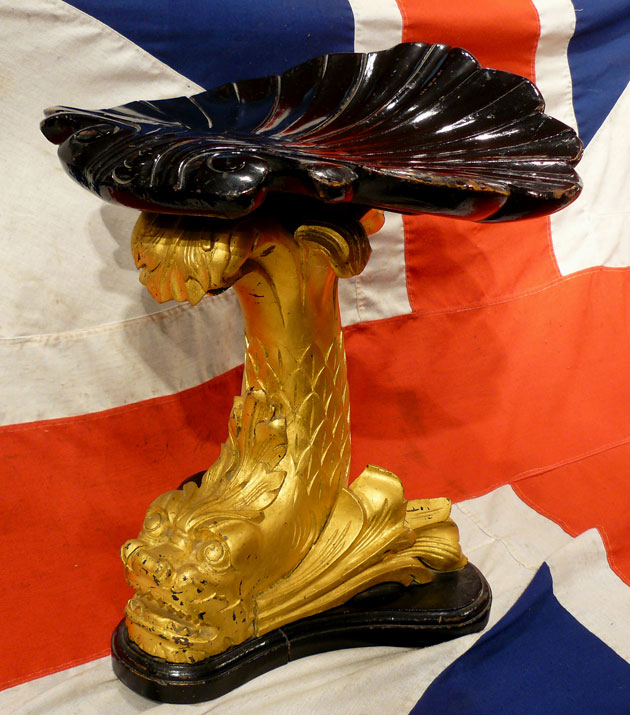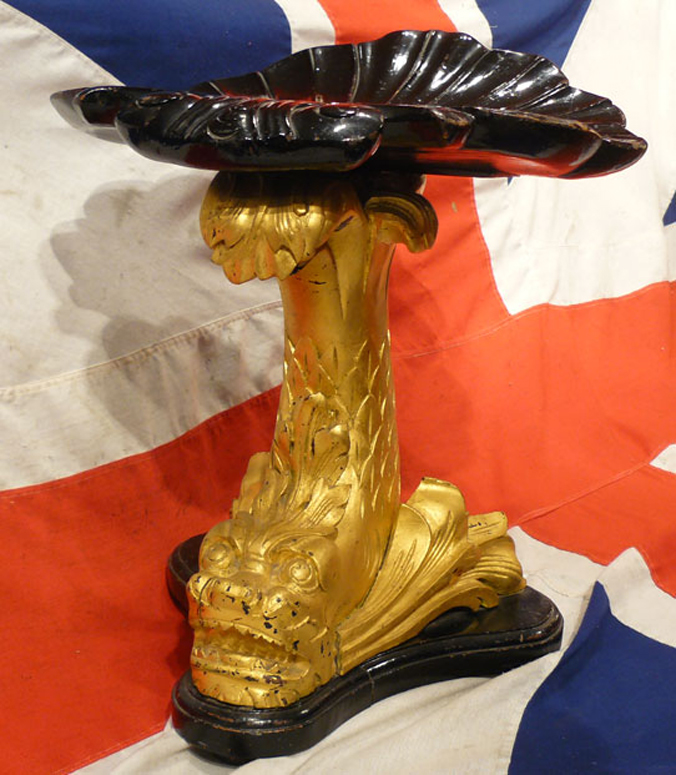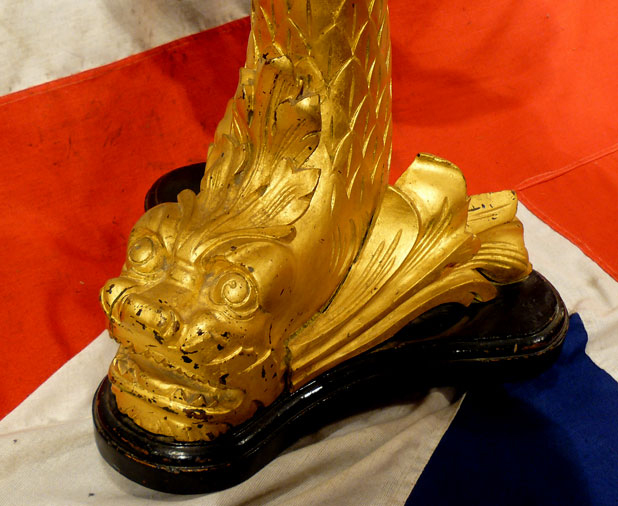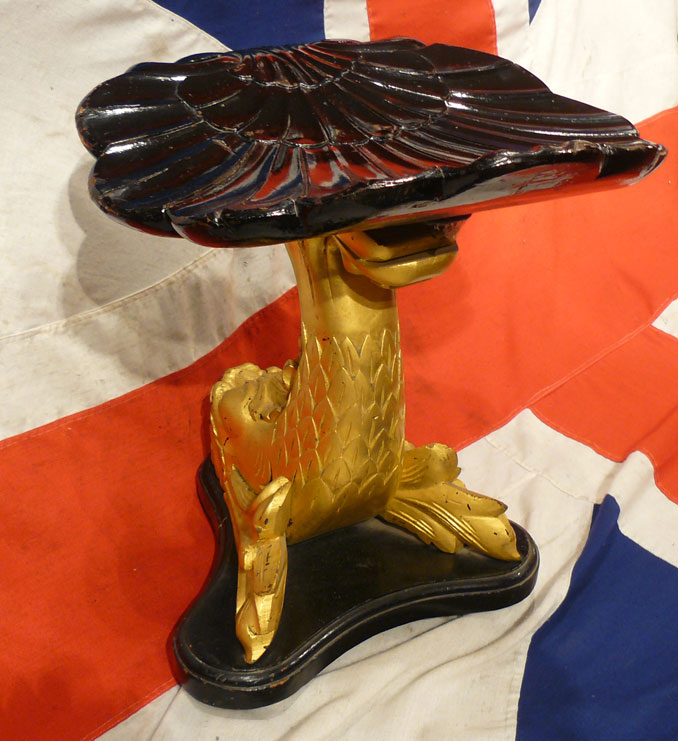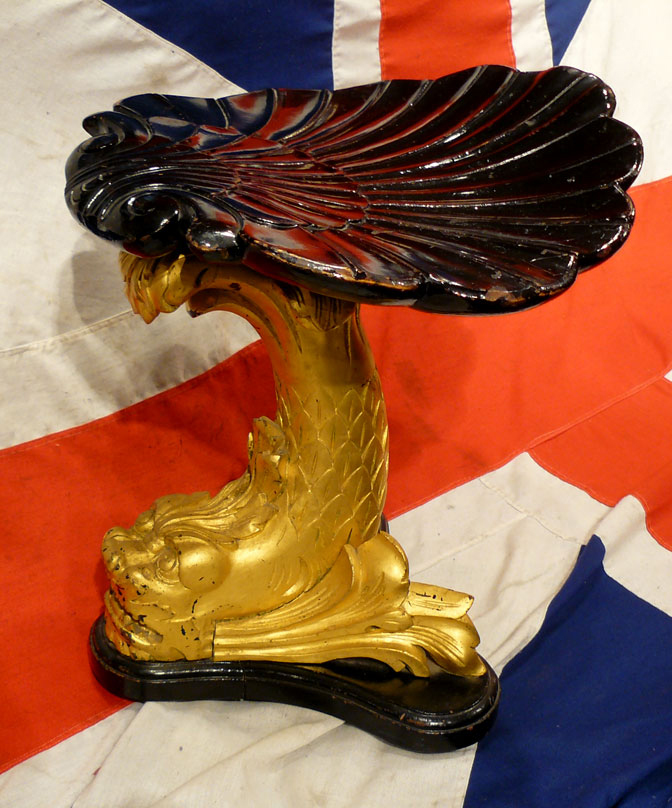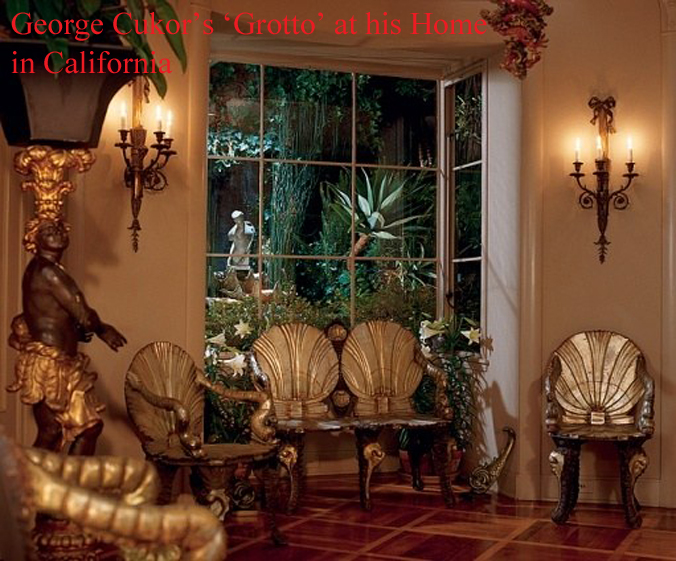A Simply Stunning Antique Rococo Italian 19th Cen. Carved Venetian Grotto Stool, Probably by Pauly et Cie. A Wonderful Original Antique Work of Art From Italian Renaissance Revival Period
In carved walnut, baroque style, with a seat shaped as a rotating elevating scallop shell, docorated in ebonised lacquer, with a scrolled front, set on a relief carved gilded dolphin, and tripartite black ebonised lacquer base. Elaborately carved style of the rococo revival.
One could just as easily imagine the great composer Mozart sitting upon such a fabulously extravagant stool, playing a spinet in one of the great palaces in Venice, and similarly, Sir Elton John seated upon it, performing one of his iconic compositions at a Oscars after party in Hollywood. Just as a piano stool should do, this stool’s shell seat rotates upon a steel spindle in order to adjust its seating height to perform at such as a Steinway or Bechstein grand piano. From 20.5 inches in height, to 23 inches high
As early as the 1500's grottoes were meant to complement Italian Renaissance gardens and provide cool places for Europeans to retreat from the sun. Of course there was a need to furnish these spaces, so fantasy furniture, called grotto furniture, became quite the trend and Grotto had it's own "style". Today home grottoes and shell encrusted furniture are undergoing something of a revival as we too long to bring our love of the ocean indoors with fun and whimsical seashell-inspired decor. Antique Venetian grotto furniture is now rare and immensely collectable. The scallop form became increasingly popular between the fifteenth and nineteenth centuries, as focus on classical, organic and symmetrical forms became more and more popular.
As the scallop form gradually became more used in architecture, its popularity started to be reflected in additional ways, predominantly having a vast influence on Italian Renaissance and Rococo furniture.
Furniture makers in Venice were very prolific in their seating designs, and were particularly known for chairs that had nautical themes. Shells, coral, dolphins and seahorses were often sculpted into chairs that took inspiration from the designs of Venetian grottoes. First created by the ancient Greeks, the grotto was formed out of caves situated near a water source and decorated with tufa, stones and shells. The grottoes acted as shrines, a restful space to pay respect to the spirits of water. In the Renaissance, grottoes became a popular addition to the landscapes of villas for those who could afford it. The Italian landscape designers revived and created a new tradition of grottoes, elaborately decorated into man-made monuments of natural beauty. The Renaissance grotto symbolized the quest for knowledge and an awareness of one's surroundings.
The Italian grotto style peaked during the nineteenth century, and furniture was created to reflect this passion for nautical themes. From the mid to late nineteenth century, furniture makers in Venice fashioned chairs based on the feel of the grotto, creating an eclectic mix of Renaissance and Rococo inspired sculpted imagery. The nineteenth century Venetian grotto chairs were most likely intended for hallways and were aimed to be sold to visitors on their European tour. This stool is in suprb condition with just some light erosion of the gilt and lacquer areas.
Apparently brought back to England by a British General after the Italian campaign in 1944/5, as a personal gift of an Italian nobleman.
The Brighton Pavilion Palace of the Prince Regent is profusely decorated with items of furniture influenced in what is now called the grotto style, with a heavy rococo influence throughout. With fabulously carved gigantic beasts such as dragons and ho ho birds, and this same shell design on stools in the music room. Items of original antique Venetian grotto seating, with the nautical shell infuence, are now commanding huge prices. Franco Zefferelli had a pair in collection that sold for $30,000
Code: 22356
5750.00 GBP

